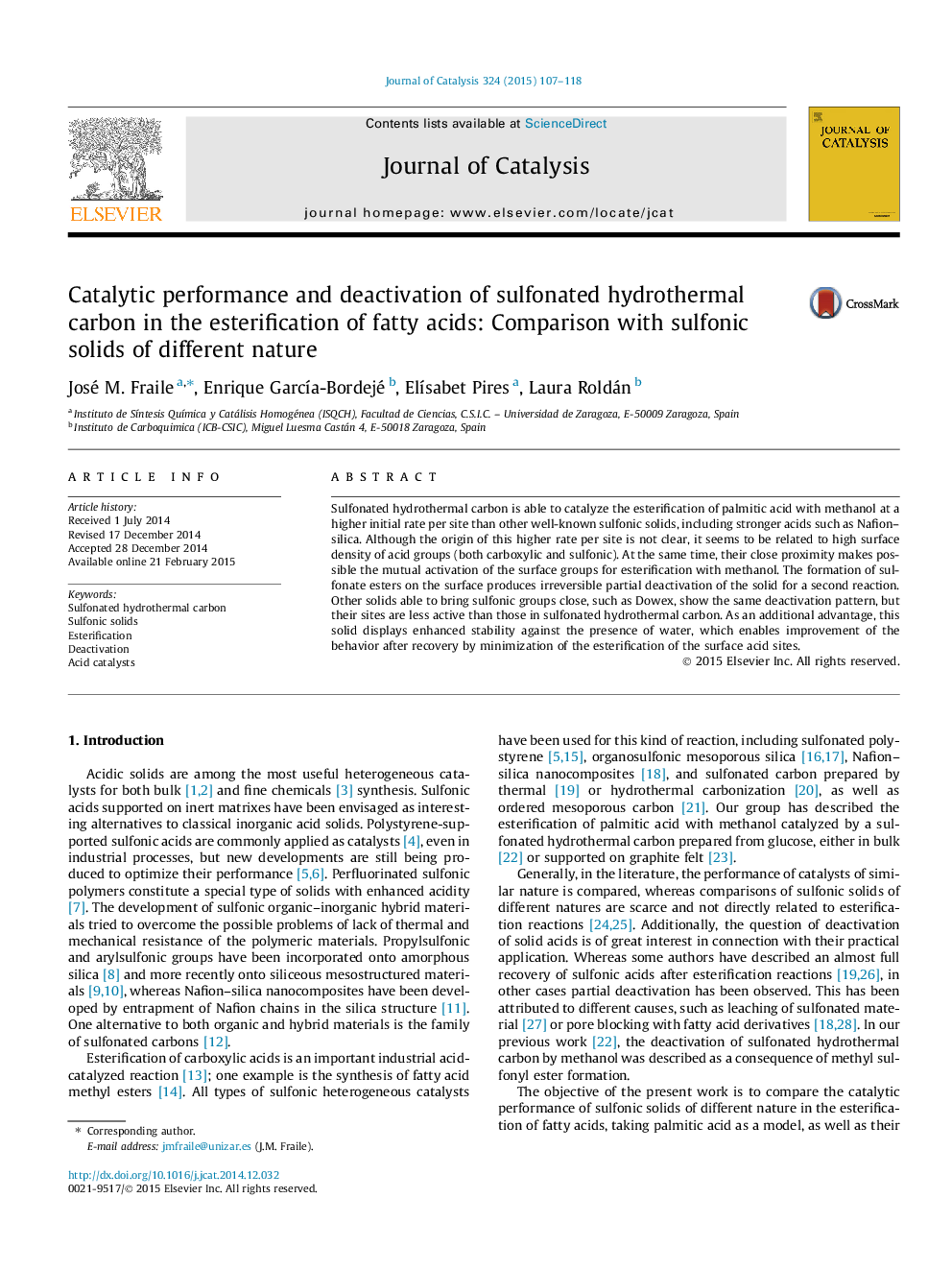| Article ID | Journal | Published Year | Pages | File Type |
|---|---|---|---|---|
| 60914 | Journal of Catalysis | 2015 | 12 Pages |
•Sulfonated hydrothermal carbon leads to higher TOF than other sulfonic solids.•Better performance seems to be linked to a high surface density of acid sites.•Irreversible deactivation occurs by reaction of surface groups with methanol.•Sulfonated hydrothermal carbon is less sensitive to the presence of water.
Sulfonated hydrothermal carbon is able to catalyze the esterification of palmitic acid with methanol at a higher initial rate per site than other well-known sulfonic solids, including stronger acids such as Nafion–silica. Although the origin of this higher rate per site is not clear, it seems to be related to high surface density of acid groups (both carboxylic and sulfonic). At the same time, their close proximity makes possible the mutual activation of the surface groups for esterification with methanol. The formation of sulfonate esters on the surface produces irreversible partial deactivation of the solid for a second reaction. Other solids able to bring sulfonic groups close, such as Dowex, show the same deactivation pattern, but their sites are less active than those in sulfonated hydrothermal carbon. As an additional advantage, this solid displays enhanced stability against the presence of water, which enables improvement of the behavior after recovery by minimization of the esterification of the surface acid sites.
Graphical abstractFigure optionsDownload full-size imageDownload high-quality image (153 K)Download as PowerPoint slide
